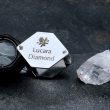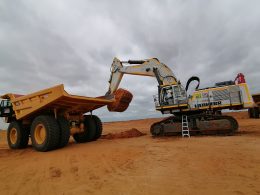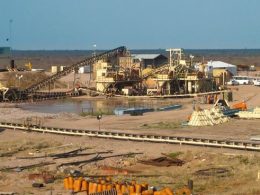Established in 1888, De Beers Group, is the world’s leading diamond company with expertise in the exploration, mining and marketing of diamonds.
De Beers Group’s two shareholders are the Government of the Republic of Botswana (15 percent) and the Anglo American plc group (85 percent). Together with its joint venture partners, De Beers Group employs more than 20,000 people across the diamond pipeline and is the world’s largest diamond producer by value, with mining operations in Botswana, Canada, Namibia and South Africa.
Innovation sits at the heart of the De Beers Group strategy as it develops its portfolio of brands, including De Beers Jewellers and Forevermark, and other pioneering solutions, such as the sourcing and traceability initiative Tracr. De Beers Group employees are committed to ‘Building Forever,’ a holistic and integrated approach for creating a better future – one that is fairer, safer, cleaner and healthier; and where communities thrive and the environment is protected.
The company’s presence in Botswana dates all the way back to just after independence. In 1967, the Orapa kimberlite pipe, one of the largest in the world, was discovered by De Beers geologists. This was a turning point in Botswana’s history, and a significant milestone for the De Beers Group. The partnership between De Beers and Botswana was formalized with the creation of the Debswana joint venture in 1969.
Shortly after, in 1972, another kimberlite pipe was discovered, which became the world’s richest diamond mine: Jwaneng. In 2006, a new joint venture operation was established, DTCB, which undertakes sorting and valuing of Botswana’s diamonds.
Later on, in 2013, De Beers Group moved its sales activities to Botswana, through the establishment of the Global Sightholder Sales business to Gaborone.
“The move to Gaborone from London was itself a historic and significant one for both shareholders, for the country and the global diamond industry,” said De Beers Group Global Sightholder Sales Vice President – Corporate Affairs and Government Relations, Otsile Mabeo.
According to Mabeo, the benefits of the move include among others; multibillion dollar international rough diamond trade had a new centre of gravity in Gaborone; world leading diamond businesses travelling to the region regularly to purchase supply; creation of more employment opportunities; more opportunity for the service sector to support international business travellers; and the introduction of auxiliary businesses such as diamond brokerage firms and gem grading labs.
DE BEERS FAMILY OF COMPANIES
With the exception of cutting and polishing activities, De Beers participates across the diamond value chain.
Mining activities in Botswana are undertaken by Debswana, which is a 50/50 joint venture partnership with the Government of Botswana. De Beers also operates its mines in Namibia through a similar joint venture arrangement known as Namdeb, while the company’s Managed Operations division mines in South Africa and Canada.
From mining, the rough production goes through sorting and valuing within producer countries. In Botswana this is done again through a 50/50 joint venture operation with the Government of Botswana, DTCB.
The sorted diamonds from the various producer countries are then shipped to Botswana for aggregation and sales, to De Beers clients called Sightholders. Sightholders are required to comply with the De Beers Best Practice Principles, a stringent set of standards which ensure that the company extends its own standard of ethics and social and environmental requirements to its Sightholder client base.
Sightholders travel to Botswana to view and purchase their goods at sales events called Sight weeks, which take place 10 times a year.
De Beers owns two diamond jewellery brands, De Beers Forevermark and De Beers Jewellers. De Beers Jewellers opened its flagship store in 2002 in London. Since then, the brand has grown to have a presence in 16 markets around the world. De Beers Forevermark has a different model and instead of having its own retail outlets, it operates mainly as a brand that is carried by other retail partners. Every De Beers Forevermark diamond has a unique inscription, ensuring that it is natural and hand-selected, with a promise that it is beautiful, rare and responsibly sourced.
FROM PROSPECTING TO JEWELLERY
The diamond pipeline begins with prospecting and exploration. Prospectors look for clues that could lead to diamonds, taking rock samples to analyse to determine if they might hold potential for kimberlite. Once a viable kimberlite is establishes, diamond mining can begin. From the mines, the diamonds progress to sorting for classification by size, shape, colour and quality. The rough diamonds are then aggregated and sold to businesses for cutting and polishing, before being set into jewellery, and eventually sold to retailers and then clients.
DE BEERS COMPANY VALUES
“Our values define who we are and guide how we engage with each other and our stakeholders. This relates to how we work together as a team internally, to how we engage with all our partners externally, and the values themselves, are completely aligned with Building Forever,” said Mabeo.
“We sell a product that is used to celebrate the most important milestones in people’s life. Our aspiration therefore, is to Make Life Brilliant. And this goes beyond diamonds.
“In everything that we do, from our strategy, to our work with our communities, we aim to make a lasting positive impact. And that is underpinned by our values. We take our passion for our product and use it as a basis to chart new ways, to collaborate to solve problems, to approach everything we do with consideration and conscientiousness, and to show that we genuinely care.”
De Beers Group’s values are as follows: Put safety first, Show we care, Pull together, Be passionate, Build trust and Shape the future.
DE BEERS IMPACT: JOB CREATION
DBGSS supports 227 jobs directly, but De Beers Group, through its JV operations, employs 6200 when you consider the mining operations and DTCB. Creating jobs and opportunities for skills development is an important priority for De Beers.
“In addition to direct jobs, we have a number of our sales teamwork in various markets around the world, to enable them to be closer to our clients, which is an important aspect of our talent development program,” said Mabeo.
“We also have an Academy that trains both staff and external learners in areas such as rough sorting and polished grading. The Academy offers a learnership program, and 90% of the people that have been through this program have been absorbed into our workforce.
Also, in relation to employment, Mabeo said, there is need to consider De Beers programs that support entrepreneurship development.
“While they do not directly create jobs, they help equip businesses with the tools they need to create stronger more sustainable operations, that can then potentially expand and employ more people,” she highlighted.
“Our programs such as Stanford Seed and Takafala are aimed at entrepreneurship development and hence are able to support indirectly, job creation.”
THE ROLE OF DE BEERS GLOBAL SIGHTHOLDER SALES
DBGSS aggregates rough diamond production from the mines in Botswana, Canada, Namibia and South Africa, and sells boxes of rough diamonds to Sightholder clients. The business sells around 90 percent of De Beers’ rough diamonds via term contracts to Sightholder customers at sales events called Sights. Sightholders are among the world’s leading diamantaires and are active in the major diamond centres. Sights are held 10 times a year in Gaborone, where Sightholders physically inspect their rough diamond allocations before deciding whether to purchase them.
SIGHTHOLDERS AND SIGHT WEEK
During sight week, clients come from all over the world to view the goods they have been allocated as a result of the sales planning process. At the beginning of the year, Sightholders give an indication of their diamond purchase requirements for the year; De Beers then assesses this and provides each Sightholder with an overview of what we expect to be able to offer over the 10 sights.
“During Sight week, Sightholders have the opportunity to come and physically examine the goods before making a purchase. It is during Sight weeks that other service providers have an opportunity for business such as hospitality, chauffeur companies, professional catering facilities, security companies,” Mabeo highlighted.
THE IMPACT OF SIGHTHOLDER FACTORIES IN BOTSWANA
Total number of Sightholders 68
Number of Industrial Sightholders 4
Number of Sightholders with polishing factories (Botswana) 28
Number of jobs created by Sightholders factories (Botswana) 2900
Percentage of citizens employed by Sightholders 75%
SIGHTHOLDERS AND BENEFICIATION STRATEGY
De Beers describes beneficiation broadly as the focus on retaining in country as many of the value-adding steps beyond mining as possible, so as to maximise the value producer country partners derive from their natural resource.
For many years rough diamond sorting and valuation has taken place in South Africa, Namibia and Botswana. In the mid 2000s, De Beers began to ring-fence a share of its global supply for those businesses that set up cutting and polishing operations in producer countries, to incentivise the establishment of further activity in this part of the value chain in producer countries. As a result of these efforts, the number of Sightholders with local factories in Botswana has increased over the years.








